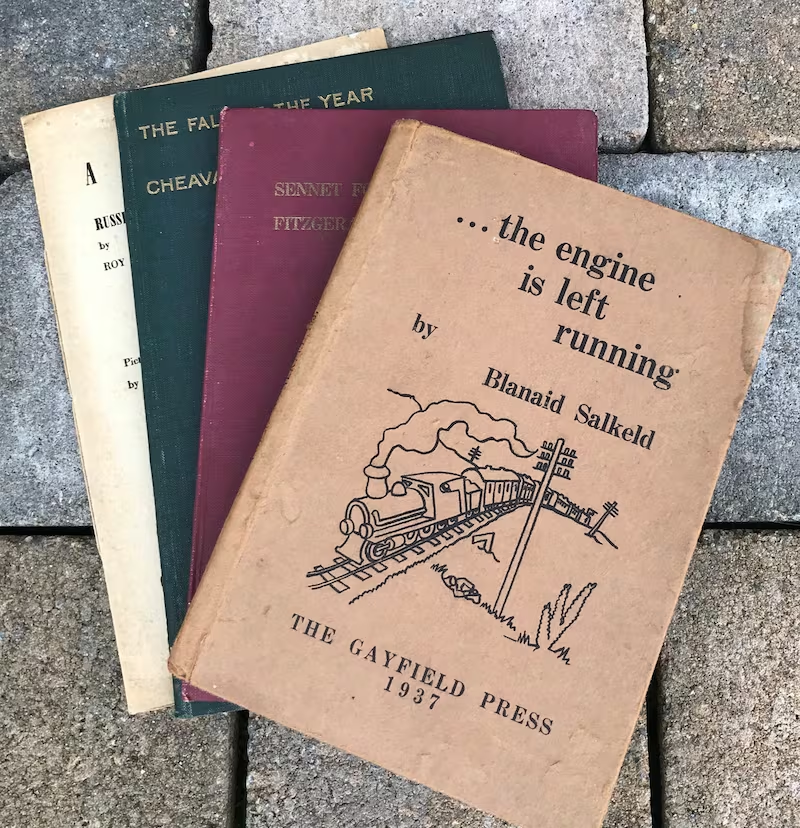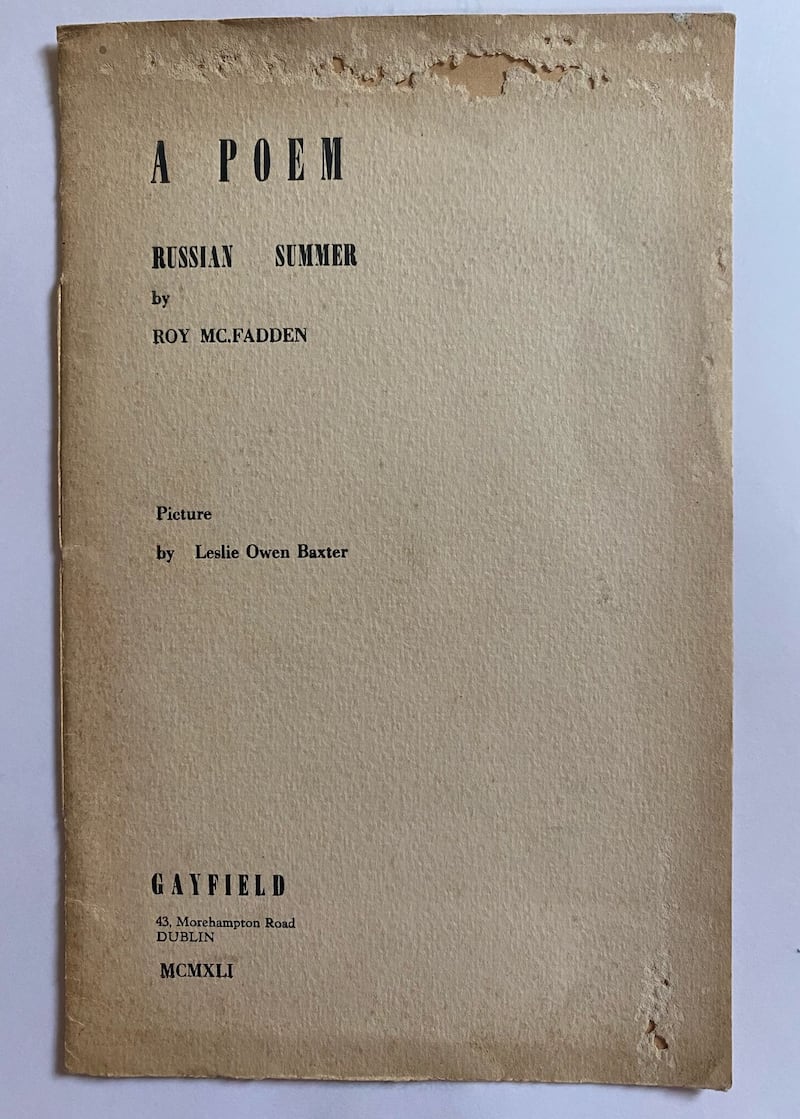For centuries, private printing presses have been at the forefront of communicating new ideas. From the observations of the astronomer Tycho Brahe to the publication of Joyce’s Ulysses by Shakespeare and Company, the ‘noble art’ of publishing has garnered attention and at times controversy.
In the past, Irish women publishers have featured largely in this sphere. The Dun Emer Press (later the Cuala) led by Elizabeth Yeats, and the Gayfield Press, led by Blanaid Salkeld, were at the forefront of private press publishing in the early years of the 20th century.
Lofty visions are what spearheads many great literary innovators. Their concerns are the preservation of a poetic tradition or the dissemination of intellectual thought. A deep dive into the rich argosy of material often overlooked in the correspondences of literary women reveals much about creative collaborations and publishing networks on which literary endeavours, then and now, are built and nurtured.
Coterie culture provided a fertile ground for feminist networking in the mid-twentieth century. Politically driven, ideological, and creatively talented writers were intent on opening a space for professional women writers. They formed webs of relationships, nationally and internationally, to give prominence to the female voice, spearheading an upsurge of feminist writing and publishing, that anticipated second wave feminism.
Blanaid Salkeld (1880-1959), poet, salonnière and publisher, embodies the indomitable spirit of this group of civically engaged women writers. When she established her printing press, the Gayfield Press, in her home in Morehampton Road in 1937, she created a publishing space which was free from interference from what was essentially a male-oriented industry, thus proving that women did and could publish.
Salkeld was born in India and brought up in Fitzwilliam Street, Dublin. Her early influences included the English poet John Keats, and the Bengali poet Rabindranath Tagore – a friend of her father (and WB Yeats), whom she met as a young girl in India. Salkeld’s poetry was also published in The Spectator, The London Mercury and TS Eliot’s edited journal, Criterion. A gifted translator, she translated the works of Alexandra Blok, and Anna Akhmatova for Irish periodicals.
By the 1930s, Salkeld was a widely recognised figure in Dublin’s avant-garde community. Her artistic life interweaved with her role as founder and member of a coterie of powerful professional women writers involved in the Women Writers’ Club. As a cultural activist, she joined with her fellow-members to lobby for the rights of women and advocated for the rights to freedom of expression. Her active role in the international writers’ network, Irish PEN, led to the awarding of a “life membership” in 1954. She was elected to the Council of the Irish Academy of Letters in 1956.

The Gayfield Press specialised in limited editions and broadsheets, publishing what was deemed by Salkeld to be ‘the best of the Irish artists.’ Salkeld was quick to set out her manifesto: “The Gayfield Press publishes entirely at its own discretion – uninfluenced by fashionable tastes, cliques or coteries. It will continue to bring out limited and illustrated editions of special interest.” In keeping with her intentions, the Gayfield Press gave a platform to new and emerging poets, while appealing to established poets, or those with the means to do so, to forego payment.
The non-commercial aspect of the press was emphasised in a letter to the poet Sheila Wingfield (Viscountess of Powerscourt) in 1939: “We are not in a position to pay fees – as the scheme is a large one and not a commercial proposition – as you may understand”. The bohemian creed of “art for art’s sake”, espoused by Salkeld, and her son, the artist, Cecil ffrench Salkeld, with whom she collaborated, depended entirely on like-minded intellectuals and visionaries.
The Gayfield Press proved to be fertile ground for unconventional ideas, flying below the radar of what had become by the late 1930s a conservative censorship regime. Amongst the eight books published by the press was Fergus N Fitzgerald’s Sennet for Coriolan: A Chorus for Six Voices (1941), which offered an unorthodox perspective on war, from the viewpoint of three generations of Germans, its verse laced with intertextual references to Dante Alighieri, TS Eliot, and Vittorio Alfieri. The press’s comparatively subversive agenda is evident in the feminist poetry of Salkeld, in her collection of poetry...the engine is left running (1937). So too, the anti-war sentiment expressed in the poetry of the left-leaning poet Ewart Milne, can be seen in the Forty-North, Fifty West (1938), and Letters from Ireland (1940) and interpreted in the bold and incisive drawings of Cecil Salkeld, lending a unique and valuable aesthetic form to the publications.
Leveraging their networks in the artistic community, the Salkelds reached out to a wide circle of friends and allies, receiving contributions for their broadsheet series from Austin Clarke, Seumus O’Sullivan, and others. Padraic Colum’s The Jackdaw, Robert Greacen’s The Bird, and what may be Roy McFadden’s first publication of Russian Summer in 1941 are some of the poems published in pamphlet form by the press. Illustrations were provided by artists Mainie Jellett, Sydney Smith, Leslie Owen Baxter, and Cecil ffrench Salkeld.

The interspace that binds authors and their creative processes with their professional selves can often be overlooked in literary history, and particularly in the case of publishing women. However, the written word has agency, leaving an indelible mark on print culture which cannot be erased. Traces of their endeavours are etched in the frontispiece, book covers, and artwork that constitutes book production. Behind this lies the creative processes that go into producing texts and the complexities of doing business in a male-oriented industry, transcending broader history narratives to reveal a human story that is inspiring.
While the unconventional approach of Salkeld and her publishing enterprise, the Gayfield Press, was bold and somewhat daring, it captures the zeitgeist of the avant garde and the female counterculture which existed in Ireland during the mid-20th century. Its enduring spirit is forged in the high prices it now commands in the marketplace for rare book and ephemera collections, providing a continuous link with the rich heritage of literature which has gone before, and that which has yet to be written.
Literary Coteries and the Irish Women Writers' Club (1933-1958) by Deirdre Brady is published by Liverpool University Press











